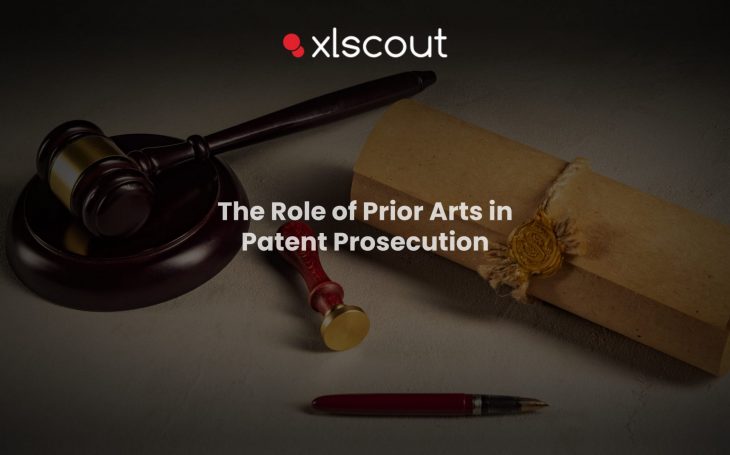
Introduction
In the domain of intellectual property (IP) management, patents play a crucial role in protecting innovations and encouraging technological advancement. The process of securing a patent involves several critical steps, one of the most important being the examination of prior art.
Prior art serves as the foundation for determining the novelty and non-obviousness of an invention, which are essential criteria for patentability.
Understanding Prior Arts
Prior art encompasses any evidence that an invention is already known and includes various forms such as published patents, patent applications, scientific journals, books, public use, and sales.
It is a crucial element in the patent prosecution process, serving to establish the uniqueness of an invention. Without a thorough examination of prior art, there is a risk of granting patents for inventions that are not truly novel, potentially leading to legal disputes and stifling further innovation.
The Importance of Prior Art in Patent Prosecution
Prior art plays a pivotal role in the patent prosecution process. It helps in:
1. Establishing Novelty and Non-Obviousness: Prior art searches ensure that the invention is both new and non-obvious compared to existing knowledge.
2. Preventing Infringement: By identifying existing patents and publications, prior art searches help avoid potential infringement issues.
3. Enhancing Patent Quality: Comprehensive prior art searches contribute to the issuance of robust and defensible patents, reducing the likelihood of invalidation in future disputes.
Conducting a Prior Art Search for Patent Prosecution
Conducting an effective prior art search involves using specialized tools and databases to uncover all relevant existing knowledge related to an invention. Strategies for an effective search include:
1. Utilizing multiple databases: Combining patent databases with non-patent literature sources.
2. Keyword and classification searches: Employing a variety of search terms and patent classification codes.
3. Reviewing patent families: Examining related patents filed in different jurisdictions.
Despite these strategies, identifying and analyzing relevant prior art can be challenging due to the vast amount of information available and the complexity of patent literature.
Leveraging Advanced AI Technologies for Prior Art Search
To address these challenges, XLSCOUT’s Invalidator LLM comes into action. This AI patent invalidation search tool leverages Large Language Models (LLMs) and Generative AI to streamline your patent prosecution process. Invalidator LLM offers numerous advantages:
1. Accuracy
90% more accurate than free patent search tools and 40% more accurate than paid alternatives.
2. Efficiency
Swiftly delivers a comprehensive list of ranked prior art references, presenting the most relevant ones as the Top 50 results.
3. Comprehensive Analysis
Provides detailed Claim to Prior Art Mapping and covers global patents and non-patent literature (NPL).
4. Versatility
Conducts quick searches for litigation pitches, validity checks before patent acquisition, and pre-licensing validity checks.
With Invalidator LLM, patent professionals can perform thorough and accurate prior art searches, ensuring a more effective patent prosecution process.
Analyzing and Interpreting Prior Art
Once prior art is identified, the next step is to analyze its relevance and impact on the patent application. This involves:
1. Determining Relevance: Assessing whether the prior art discloses the same or similar invention.
2. Evaluating Impact: Understanding how prior art affects the claims of the patent application.
3. Overcoming Objections: Developing strategies to address and overcome prior art objections raised by patent examiners.
Prior Art and Patent Examination
Patent examiners play a critical role in evaluating prior art during the patent prosecution process. They scrutinize the identified prior art to determine if the invention meets the criteria of novelty and non-obviousness.
Responding to prior art rejections requires:
1. Detailed Analysis: Providing a thorough analysis and argumentation to differentiate the invention from the prior art.
2. Amendments: Making necessary amendments to the patent claims to overcome objections.
3. Strategic Responses: Crafting well-reasoned responses to address the examiner’s concerns.
Legal and Ethical Considerations
Legal and ethical considerations are paramount in presenting prior art during patent prosecution.
Patent applicants are legally required to disclose all known relevant prior art. Ethical obligations also demand honesty and transparency in the presentation of prior art.
Failure to disclose relevant prior art can result in severe consequences, including patent invalidation and legal penalties.
Global Perspectives on Prior Art
The standards for prior art can vary across different jurisdictions, influenced by international treaties and agreements.
Harmonizing prior art practices globally is essential to ensure consistent and fair patent prosecution processes.
Understanding these differences and harmonizing efforts can facilitate smoother patent applications in multiple regions.
Future Trends in Prior Art and Patent Prosecution
Emerging technologies continue to impact prior art and patent prosecution. Advances cutting-edge AI technologies, such as XLSCOUT’s Invalidator LLM & Novelty Checker LLM, are transforming prior art searches, making them more efficient and accurate.
These technologies predict a future where patent prosecution is streamlined, reducing time and costs while enhancing the quality of patents granted.
Conclusion
In conclusion, prior art is a cornerstone of the patent prosecution process, ensuring the novelty and non-obviousness of inventions.
Leveraging advanced AI patent invalidation analysis tools like Invalidator LLM or AI prior art search tools like Novelty Checker LLM, can significantly enhance the accuracy and efficiency of prior art searches, leading to stronger and more defensible patents.
As the landscape of IP management continues to evolve, embracing innovative technologies will be key to navigating the complexities of patent prosecution and fostering a robust environment for innovation.

